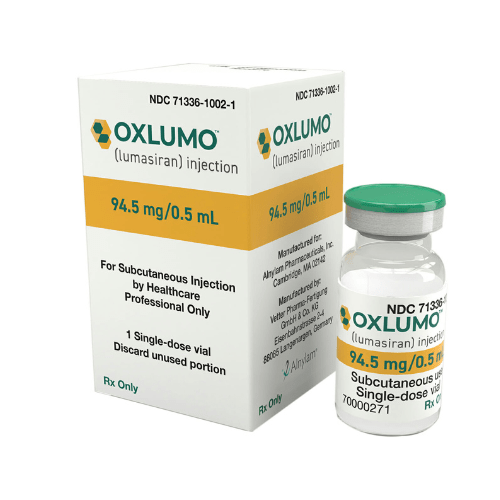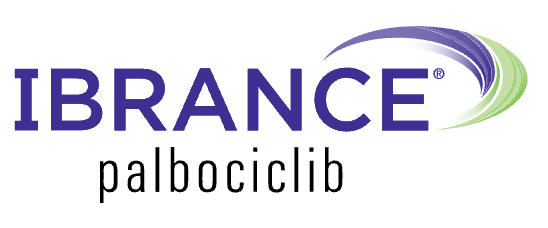
Introduction
Oxlumo belongs to the class known as RNAi Agents with an active ingredient called Lumasiran. This medication is prescribed for treating primary hyperoxaluria type 1, a hereditary condition characterized by the accumulation of oxalate in the body, leading to harm to the kidneys and other organs. Primary hyperoxaluria is an uncommon condition, and Oxlumo received orphan medicine status on March 21, 2016, signifying its use in treating rare diseases [1].
FDA Approval
In October 2022, the FDA approved a supplemental new drug application for Oxlumo to treat patients with primary hyperoxaluria type 1, a rare and life-threatening metabolic disease.
Uses
Oxlumo is an siRNA drug that targets HAO1 and is used to treat primary hyperoxaluria type 1 (PH1) in pediatric and adult patients to reduce urinary oxalate levels [2].
Mechanism Of Action
Oxlumo is a drug that uses small interfering ribonucleic acid (siRNA) to target and reduce oxalate production in the body. This helps lower urinary oxalate levels, preventing kidney stones and organ damage associated with PH1.
Dosage and Administration
The recommended Oxlumo injection dosage is based on body weight:
- For those weighing less than 10kg, a loading dose of 6mg/kg is given once monthly for three doses, followed by a maintenance dose of 3mg/kg monthly.
- If the weight is between 10 kg and less than 20 kg, a loading dose of 6mg/kg is administered once monthly for three doses, and then the maintenance dose is 6mg/kg given once every three months (quarterly).
- Those weighing 20 kg and above receive a loading dose of 3mg/kg monthly for three doses, followed by a maintenance dose of 3mg/kg once every three months (quarterly).
- The Oxlumo injection is available in an Oxlumo 94.5mg/0.5 mL single-dose vial for subcutaneous use.
Recent Research
FDA approval for Oxlumo was granted following the findings from the phase 3 ILLUMINATE-C study, which included patients with severe renal impairment, including individuals undergoing hemodialysis [3]. During the trial, Oxlumo effectively decreased plasma oxalate levels and displayed a promising safety and tolerability profile in patients with compromised kidney function, including those with kidney failure undergoing hemodialysis treatment.
Warning and Precaution
Safety and effectiveness of Oxlumo in pregnant or breastfeeding women have not been studied. If you are pregnant, planning to become pregnant, breastfeeding, or planning to breastfeed, it’s essential to discuss the potential risks with your doctor. Additionally, Oxlumo’s safety and effectiveness have not been established in pediatric patients under the age of 6. The most common side effects reported in patients treated with Oxlumo was injection site reaction. Oxlumo is contraindicated in patients with a history of severe hypersensitivity reaction to lumasiran or its excipients.
Drug Interaction
Induction-based interactions leading to decreases in Oxlumo concentrations are possible when co-administered with a CYP3A4, potent CYP1A2, or CYP2C19 inducer, such as phenytoin, rifampin, phenobarbital, and carbamazepine, as these enzymes all metabolize lumasiran. Concomitant use of strong inducers with Oxlumo should be avoided, or dosage adjustments should be made.
Conclusion
In summary, Lumasiran oxlumo represents a significant advancement in PH1 treatment, with FDA approval and a tailored dosing approach based on body weight. The therapy’s success in reducing urinary oxalate levels, even in severe renal impairment cases, offers hope to pediatric and adult patients. This makes Oxlumo a valuable addition to PH1 treatment options, potentially improving patient outcomes and quality of life. Oxlumo price in India depends on the product requirement. Request more details by contacting our Patient Support Team at (+91) 93157 05373 or help@sansfro.com. Effective collaboration with healthcare professionals is crucial when considering this promising solution.
Reference



